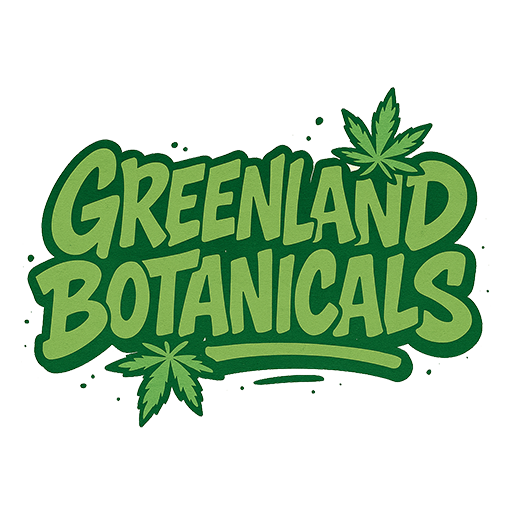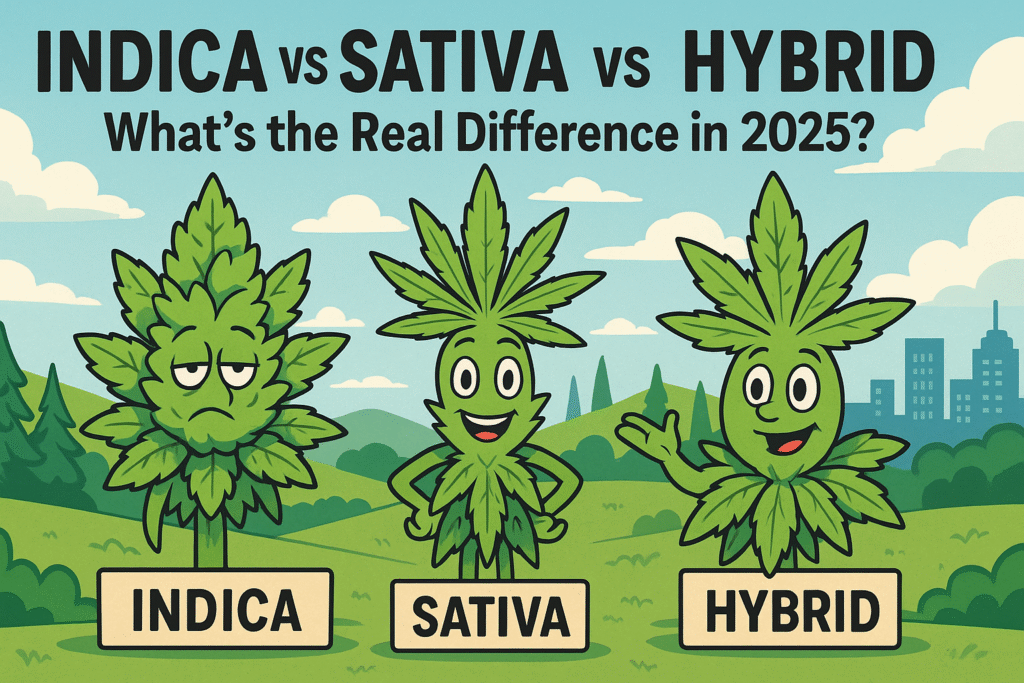Uncategorized
Indica vs Sativa vs Hybrid
Indica vs Sativa vs Hybrid: What’s the Real Difference in 2025?
Whether you’re a seasoned smoker or just starting your journey into cannabis, you’ve probably come across the terms Indica, Sativa, and Hybrid. These labels have long guided users in choosing strains that align with the experiences they want. But in 2025, the conversation around these classifications has grown much deeper. It’s not just about couch-lock vs energy anymore. This guide explores the real difference between Indica, Sativa, and Hybrid strains in today’s evolving cannabis culture and how Canadian users are navigating their options.
The Origins of Indica and Sativa: A Quick Recap (H1)
Historically, cannabis plants were classified based on their physical characteristics. Cannabis sativa was native to equatorial regions, growing tall with narrow leaves and longer flowering cycles. Cannabis indica, native to areas like Afghanistan and India, was shorter, bushier, and had broader leaves.
Originally, Sativas were known for uplifting, cerebral effects—popular for daytime use—while Indicas were associated with relaxing, body-heavy effects. Hybrids, as the name suggests, were the middle ground, blending effects and genetics from both parent strains. But with decades of crossbreeding and commercial cultivation, things aren’t so black and white anymore.
Indica vs Sativa vs Hybrid: Does It Still Matter in 2025? (H1)
The short answer is yes—but with nuance. In today’s cannabis industry, particularly in Canada, most strains are technically hybrids. However, they still lean toward dominant Indica or Sativa effects.
Indica-dominant strains are preferred by those seeking relaxation, sleep support, or pain relief. Think of classics like Northern Lights, Purple Kush, or Tom Ford Pink Kush (available at Greenland Botanicals).
Sativa-dominant strains are more associated with creativity, focus, and energy. Examples include Jack Herer, Green Crack, or Durban Poison—often favoured for daytime use.
Hybrid strains, like Gorilla Glue, MAC (Miracle Alien Cookies), or Wedding Cake, offer a balanced experience tailored to modern users. With hybridization becoming the norm, breeders now focus more on cannabinoid and terpene profiles than outdated labels.
What Science Says in 2025 (H1)
Science has shifted the conversation. According to studies referenced by Leafly, effects are more accurately linked to terpenes (aromatic compounds like myrcene, limonene, and linalool) and cannabinoid content (like THC, CBD, and CBG).
For example:
- High myrcene + THC = sedative effects (often labeled Indica)
- High limonene + THC = energizing effects (often labeled Sativa)
So while the Indica vs Sativa vs Hybrid label gives a general idea, the true effects depend on the strain’s chemical profile—something most Canadian producers now include on packaging.
Choosing the Right Strain for You in Canada (H1)
Here’s how to narrow down your choice in 2025:
1. Consider the Desired Effect, Not the Name
Instead of asking, “Is it an Indica or Sativa?” ask, “Will this strain help me focus or help me sleep?” At Greenland Botanicals, you can filter products by effect: euphoria, relaxation, focus, sleep, and more.
2. Read Lab Profiles
Look for third-party lab tests showing THC %, CBD %, and dominant terpenes. This gives a clearer idea of how a strain will affect you.
3. Try Microdosing
In 2025, microdosing cannabis—taking small, sub-perceptual doses—is a huge trend in Canada. It’s perfect for those who want benefits without a heavy high. Hybrid strains are great for this.
4. Pair Strains with Your Lifestyle
- Morning coffee + Sativa (Jack Herer) for productivity
- Post-gym + Hybrid (Gorilla Gas) for muscle relaxation
- Before bed + Indica (Death Bubba) for sleep
Top Strains to Try in Each Category (2025 Update) (H1)
Indica-Dominant Strains (Relaxation & Sleep)
- Tom Ford Pink Kush
- Death Bubba
- Hindu Kush
- Platinum Rockstar
Sativa-Dominant Strains (Energy & Creativity)
- Jack Herer
- Lemon Skunk
- Chocolope
- Gummy Bear OG
Balanced Hybrids (Anytime Use)
- MAC Daddy
- Greasy Runtz
- Face Off OG
- Jealousy AA
All these strains are available online at Greenland Botanicals, with lab-tested terpene and cannabinoid breakdowns.
Are These Labels Still Useful in 2025? (H1)
Yes and no. For new users, Indica/Sativa/Hybrid still serves as a helpful introduction. But if you’re looking for precision, it’s best to focus on chemical profiles. Legal Canadian dispensaries now provide terpene charts and effect ratings, making it easier to choose your ideal strain.
As Health Canada regulations tighten, licensed growers are encouraged to label products based on effects and terpene content, not just plant morphology. This shift empowers users with better, more accurate information.
FAQs (Frequently Asked Questions)
1. Is there still a true Sativa or Indica strain?
Pure landrace strains exist, but most commercial strains are hybrids. Breeders have crossed so many types that purity is rare.
2. Which is stronger: Indica or Sativa?
Strength depends on THC content, not type. An Indica with 30% THC will be stronger than a Sativa with 18%, and vice versa.
3. What’s the best strain for anxiety?
Look for hybrids or Indica-dominant strains high in CBD and linalool or myrcene. Avoid high-THC Sativas if you’re sensitive to anxiety.
4. Can Sativa strains help with focus?
Yes, strains high in limonene or pinene often improve focus and energy. Many creatives prefer Sativas for that reason.
5. Are Hybrids just marketing hype?
No, Hybrids are real and often the most useful category. They combine traits to create customized effects.


